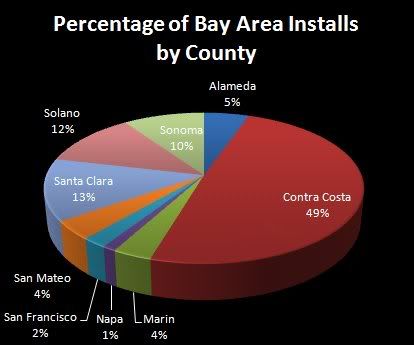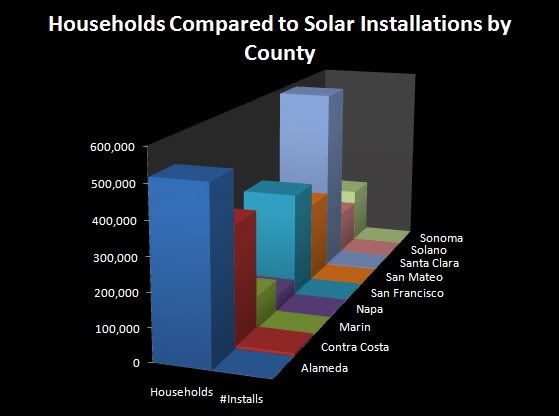We installed the most generation capacity in the nation in 2007! Yahoo
http://www.illinoiswind.org/news/index.asp

News
Section 9006 Program Funds for Renewable Energy Systems and Energy Efficiency Improvements
This message is from Molly Hammond, USDA Rural Development- Illinois, April 7,2008USDA published a notice yesterday (4/6/08)in the Federal Register announcing it is accepting applications for fiscal year (FY) 2008 to purchase renewable energy systems and make energy efficiency improvements for agriculture producers and rural small businesses in eligible rural areas. Funding will be available in the form of grants, guaranteed loans, and combined guaranteed loans and grant applications. For FY 2008 there is approximately $15.9 million in funding for competitive grants and $205 million in authority for guaranteed loans. Funding for grant and loan combination packages will be funded from the same allocation as loan guarantees.I have attached the Federal Register document to this email. Please read it carefully. Pay particular attention to the mention of the Environmental Assessment. The environmental process should begin right away. Please contact me for information on environmental requirements for specific projects. This year there will be two competitive grant cycles. The first deadline is April 15, 2008. Applications that are not funded in the first competition will automatically be considered under the second competition. Grant applications in the second cycle are due no later than June 16, 2008. Loan applications and grant/loan combination applications will be evaluated on a bi-weekly basis until June 16. These will be funded on a first-come first-serve basis. I would suggest submitting a combination application as soon as possible. Please note that combination applications must score at least 84 points to remain eligible.
Please see the following websites for more information on the program:
http://www.rurdev.usda.gov/rbs/farmbill/index.html – Section 9006 website
A copy of the regulation can be found at the above website, but a more reader-friendly version is available at this link: http://www.rurdev.usda.gov/regs/regs/pdf/4280b.pdf
Application templates and other useful items can be found at the Environmental Law and Policy Center website. Please note that this is not a USDA Rural Development website.
www.farmenergy.org
http://www.agmrc.org/agmrc/provider_search.asp – Link to a list of grant writers.
I look forward to working with you, and feel free to contact me with any questions.
Molly K. Hammond
USDA Rural Development – Illinois
Business Cooperative Specialist
Phone: 217-403-6210
Fax: 217-403-6215
But Illinois is not without resistance.
Rail splitter project may
`
be caught in turbulence
By TIM LANDIS
BUSINESS EDITOR
tim.landis @sj-r.com
One of the nation’s largest developers of wind energy hopes to have 67 turbines churning out electricity by the end of this year along a stretch of interstate highway about 50 miles north of Springfield.
The $175 million to $200 million Rail Splitter Wind Farm would produce enough power to meet the annual needs of 30,000 homes.
“Assuming we get approval, we hope to begin construction in May and to have the project online by the end of this year,” Bill Whitlock, a project manager for Horizon Wind Energy, said Wednesday.
Whitlock said the company plans to file for a construction permit in Logan County or,-Monday, and already has filed in Tazewell County for the right to build on 11,000 acres of farmland shared by the two counties.
The site is on both sides of Interstate 155 near the community of Delavan, between Lincoln and Peoria. Whitlock said 38 of the 380-to 390-foot towers — the state Capitol, by comparison, is 361 feet to the top of the dome — would be in Tazewell County and 29 would be in Logan County.
Whitlock said the company also continues to negotiate leases with farmers whose land is needed and is exploring markets for the power.
Horizon Energy’s first major project in central Illinois, the 240-turbine Twin Groves Wind Farm near Bloomington, ran into a variety of legal challenges, including from landowners, before it began producing electricity last year. The U.S. Department of Energy r nois at 16 among the top 20 states for wind-energy potential.
But the head of the Illinois Wind Working Group — a consortium of utilities, rural electric cooperatives, farm organizations and economic development agencies — said Wednesday he expects commercial wind farms to remain controversial.
“There are probably going to be lawsuits, and counties really have to be careful to make sure they follow legal procedures,” said David Loomis, who also is an associate professor of economics at Illinois State University in Normal.
Even on a residential scale, wind turbines can be a touchy subject with neighbors, according to Bill Fabian, owner of Midstate Renewable Energy Services in Champaign. The home-based business has sold about a dozen residential turbines the past two years.
“You always have the proximity issue with neighbors who may not be as enthused about wind power as you are,” Fabian said.
He said the typical home unit costs $15,000 to $19,000. The tower is usually 60 feet, tall enough to get above most treetops.
“I think it’s going to remain mostly a niche market for residents who can not only afford it, but have the commitment to make it work,” he said.
Officials in Logan County have estimated the Rail Splitter project could generate about $234,000 in tax revenue the first year. The Tazewell County Zoning Board of Appeals has set three public hearings in April on the proposal.
GateHouse News Service contributed to this report. Tim Landis can be reached at 788-1536.
:}
But Sangamon County? The leader in all things innovative? Not so much…
Flat ground won’t work
By TIM LANDIS
BUSINESS EDITOR
tim.landis@sj-r.com
It isn’t for a lack of wind. But Sangamon County is considered too flat in most spots when it comes to commercial wind development.
Nearly a year and a half since the county approved rules for wind-turbine construction, exactly two permits have been approved. Both were for what amounted to do-it-yourself home projects in the wind industry.
“It was for two mini-systems,” said county zoning and building administrator Randy Armstrong.
The wind rules were approved in the fall of 2006 after a commercial developer approached the county about the possibility of a local wind firm. After the initial inquiry, nothing more was heard, Armstrong said.
“They said they were interested, so we thought maybe we’d better get something on the books,” he said.
The director of the Illinois Wind Working Group at Illinois State University explained that potential turbine sites are graded ,m a scale of 1 to 7. The higher the number, the more suitable the area for commercial wind development.
“Most of Illinois is a class 3-plus or a 4. Usually, a class 3 or 4 is the minimum they’d consider to be commercially viable,” David Loomis said.
Loomis said Illinois also has the advantage of large population centers that make it financially feasible to build projects at lower wind speeds compared to sparsely populated states such as North Dakota that rank at a “6” or higher.
But he said the suitability of terrain varies considerably, even from county to county.
“If you look at McLean County (Bloomington-Normai), you’d say, ‘Gee, it’s as flat as Sangamon County. But in reality, there’s a slow rise upward, and it ends in a ridge on the eastern side of our county,” he said.
The Rural Electric Convenience Cooperative, based in Auburn, is waiting for equipment to begin construction of a single wind turbine on a reclaimed coal-mine site about 30 miles south of Springfield, along Interstate 55 at Farmersville.
The turbine would supply about 500 homes.
Tim Landis can be reached at 788-1536.
:}










 Located about 40 miles northwest of
Located about 40 miles northwest of 



